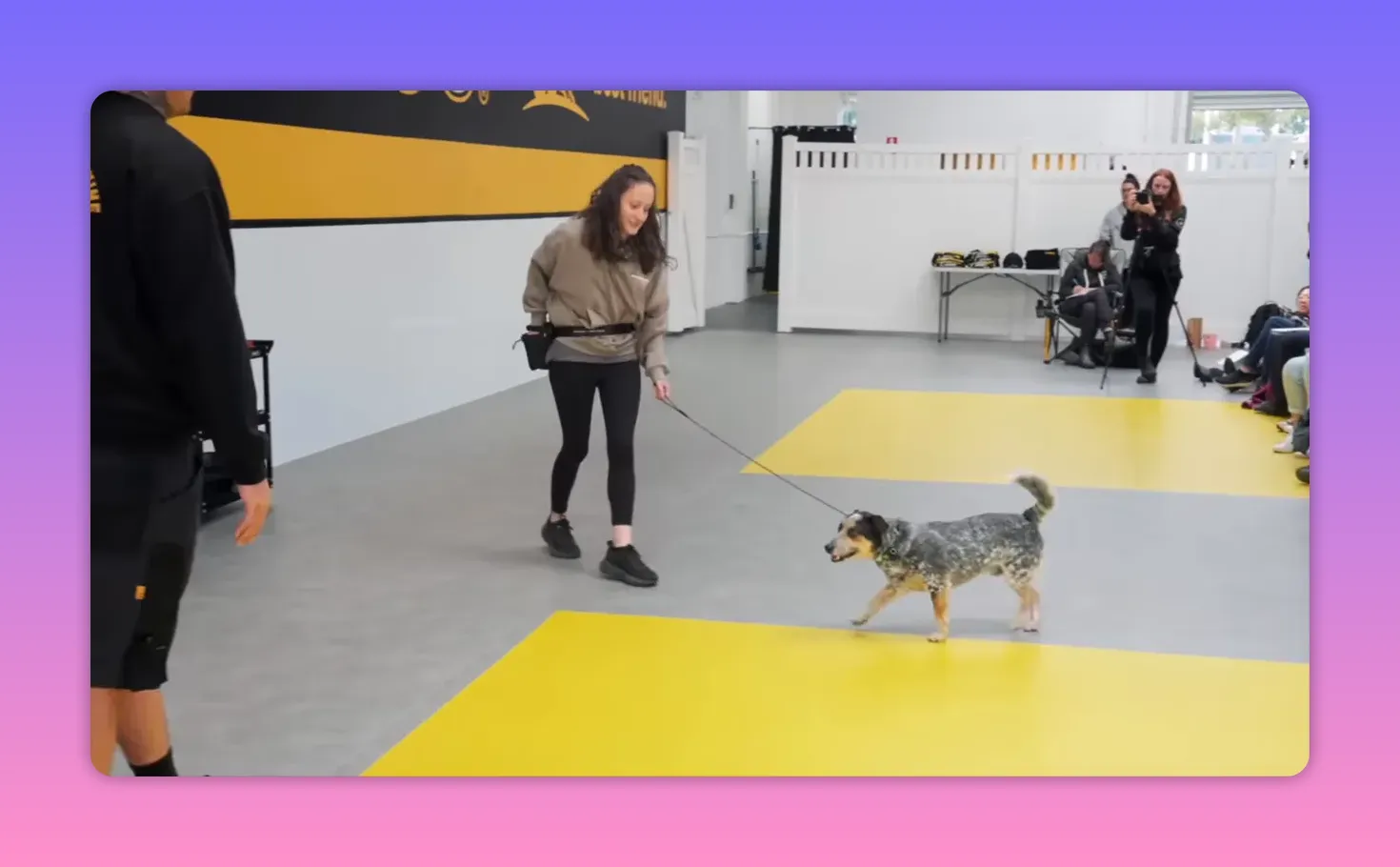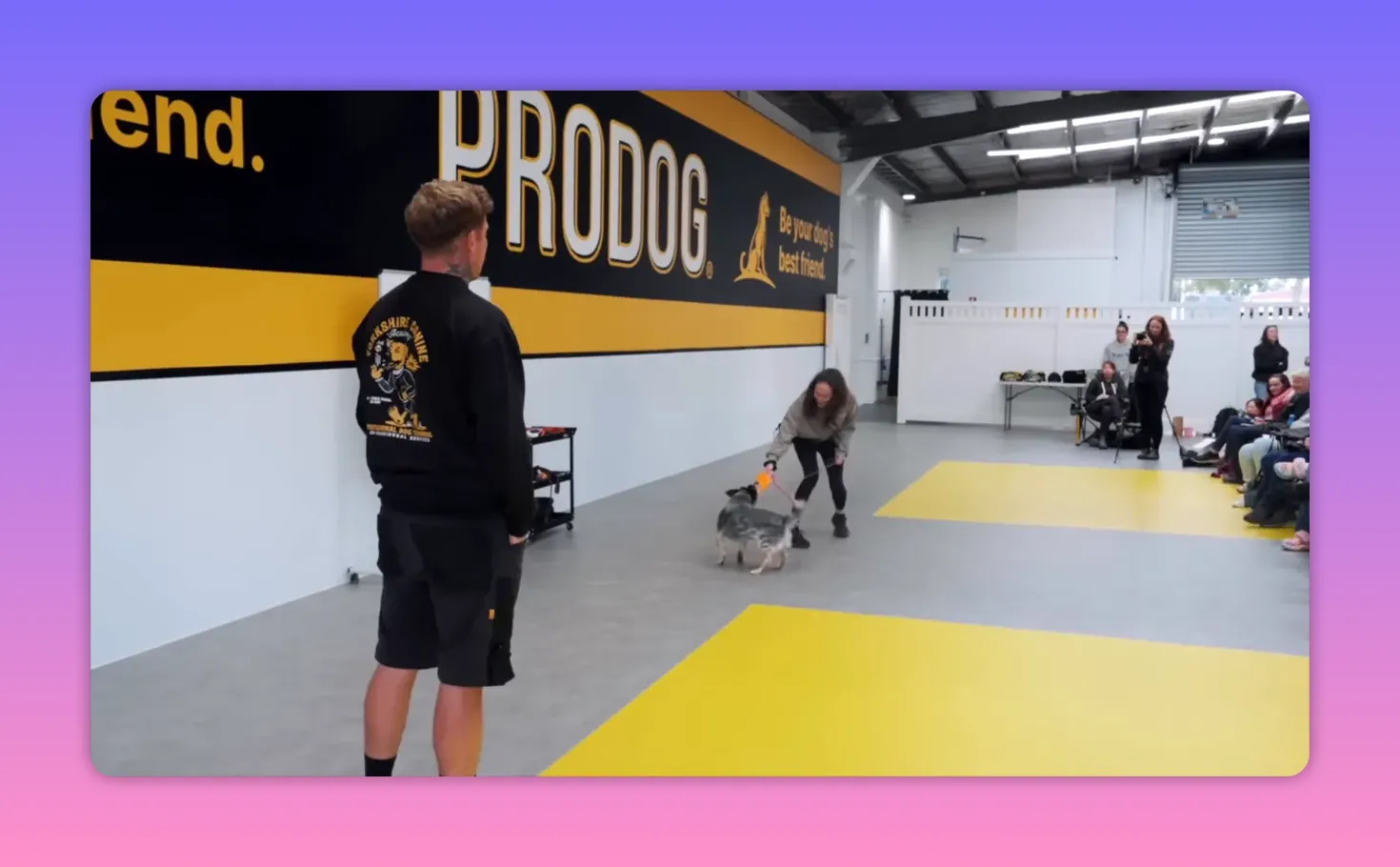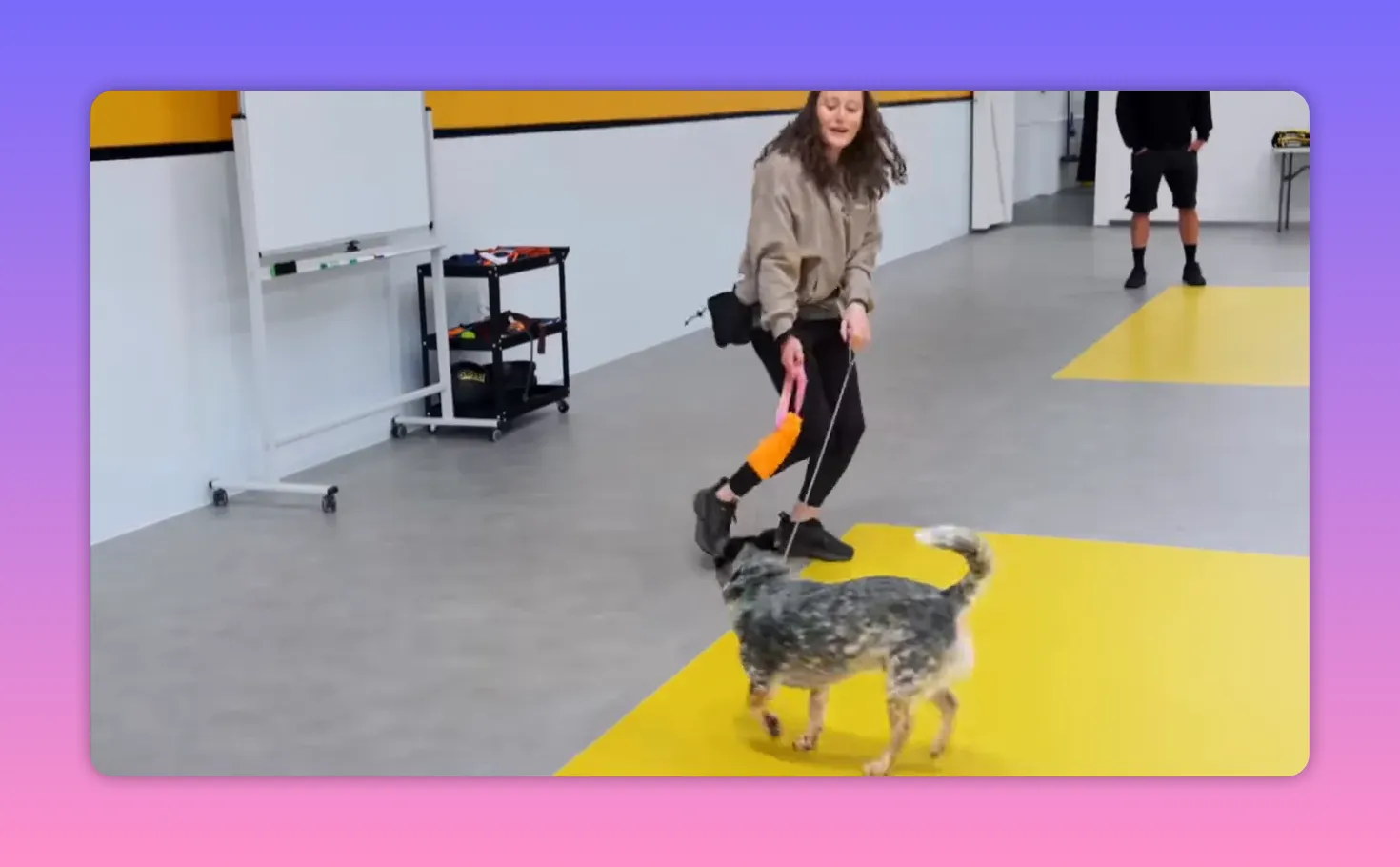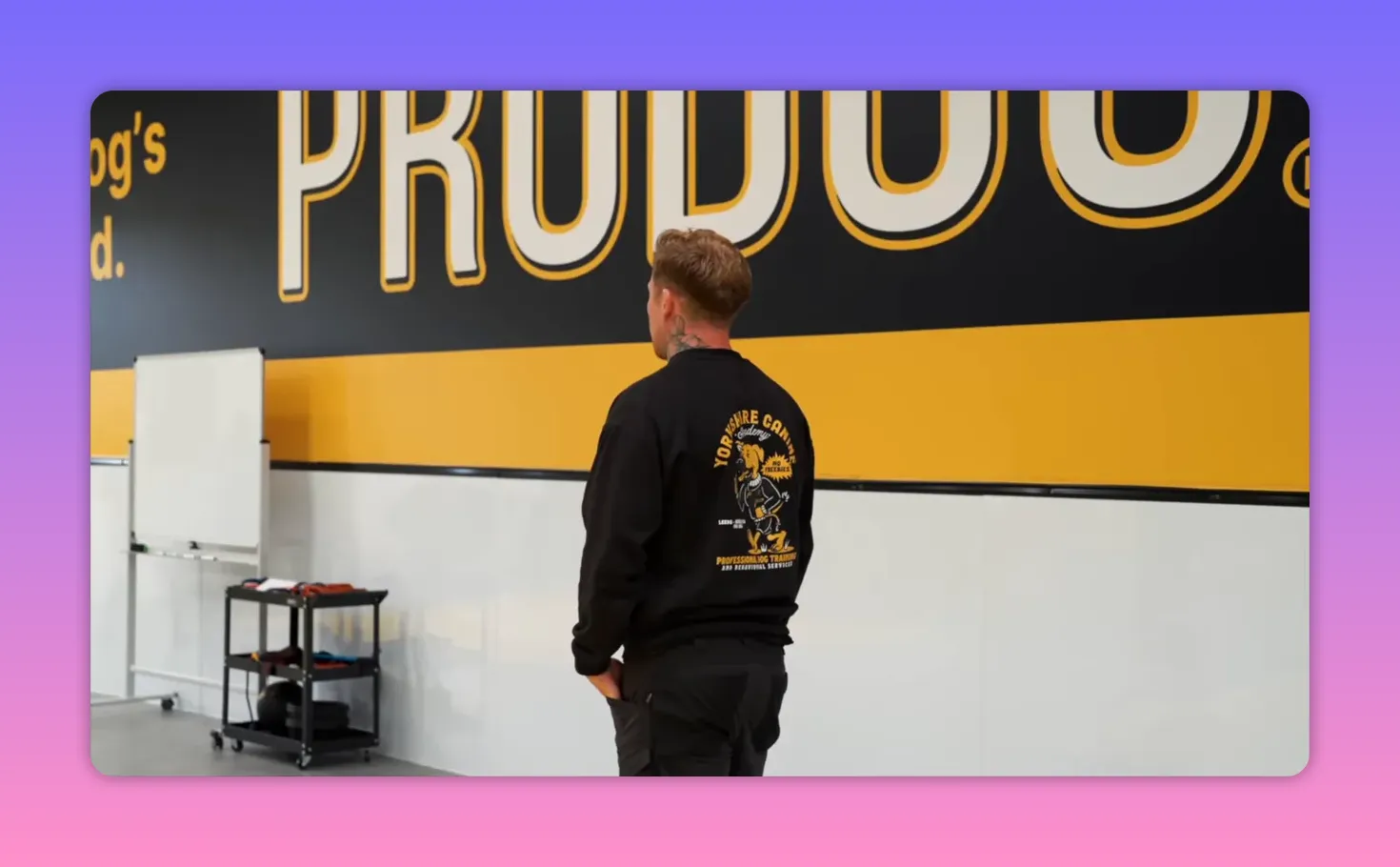I’m going to be honest: dog training is not that complicated. The problem is consistency. Most owners are unintentionally giving their dogs mixed signals and then wondering why the dog is whining, reacting, or straight-up ignoring them. Fix the confusion and you’ll fix most behaviour problems. That’s the whole point of the switch-based system I use with dogs like Archie, Molly and Stark. It’s one tiny tweak you can add to your daily routine that, when done consistently, will have huge results.
Table of Contents
- The core problem: mixed signals and blurred modes
- The one thing: a switch-based system of modes
- Words are tiny switches — give them value
- How I mark and reward: a simple marker system
- Example walk-through: Archie
- Detailed exercise you can start today
- Why movement and marking matter
- Practical play tips: get the prey drive running
- Troubleshooting common problems
- When to escalate: working with a reactive dog
- How to set criteria for chill mode
- Routine cheat sheet: daily checklist
- Examples from other dogs: Molly and Stark
- Final reminders and philosophy
- What does "chilling" mean in this system?
- How do I choose my marker and keep it consistent?
- How often should I do jackpot rewards?
- What if my dog ignores the verbal switches at first?
- Can I use this system for reactive dogs?
- Is chill mode a command like down or stay?
- How long should chill mode last?
- What tools do I need to start this system?
- How long until I see results?
- When should I seek additional help?
The core problem: mixed signals and blurred modes
Dogs live in the moment, and they read patterns. When we send inconsistent cues they get confused. They don’t ask “what would my human like?” — they ask “what is happening right now and how do I respond?” If the pattern is fuzzy, anticipation builds. That anticipation turns into whining, shadowing, over-arousal, reactive barking or ignoring you when it’s inconvenient.
Here’s the brutal truth I tell people all the time: half the dogs I see react because they simply do not know what you want from them. They are stuck between modes. One minute you’re playing, the next minute you’re chilling, and somewhere in the middle the dog thinks maybe something fun could happen and spends the day on the lookout. That is a recipe for a stressed dog and a frustrated owner.
"As soon as he starts pissing and moaning, he pisses and whines and moans. And when we trigger movement or play or training or whatever, then we blur the lines."
The one thing: a switch-based system of modes
Instead of letting your dog guess, explicitly tell them which mode you are entering. The system is stupidly simple: open windows of activity and close them. Use clear verbal cues that mean the same thing every time. I use three core modes:
- Training mode — we are learning, rewards and anticipation are welcome. Expect excitement and some whining as the dog anticipates reward.
- Play mode — full-on arousal, high energy, toy-based engagement. This is where prey drive and massive enthusiasm are welcome.
- Chill mode — parking up. No fun, no training, no games. Just exist together calmly.
Tell your dog what you are doing, every time. Say the words, mean them, and make the behavioural consequences consistent with the mode. Over enough repetition dogs start to respond autonomously. Eventually "we're training" will make them light up, "we're playing" will make their arousal spike, and "we're chilling" will make them park up.

Words are tiny switches — give them value
Words by themselves mean nothing if you don't pair them with consistent consequences. In practice that looks like:
- Tell the dog "we're training" then do training. Reward, yes-mark, and be lively. Anticipation is allowed here.
- Tell the dog "we're playing" and do a high-energy toy session, races to toys, tug or fetch. Let them go bonkers.
- Tell the dog "we're chilling" and do not reward, do not excite. If the dog whines or follows you around during chill, correct or reposition him according to your agreed criteria.
This is not about being mean. Chill mode can last hours. It’s a lifestyle decision: your pet dog can be a pet or a performance dog; both are fine as long as they are consistent with the signals you give.

How I mark and reward: a simple marker system
Markers are the linchpin that tells the dog "you nailed it". Keep your marker consistent. I use a salient verbal marker — "yes" — but whatever you choose should be used consistently. There are two critical parts to the reward structure:
- Regular yes: one short marker for normal, everyday reinforcement. One piece of kibble or a brief play payoff.
- Jackpot yes: one marker that leads to an elongated reward event. This can be a rapid series of treats, a sustained five-minute play session, or a toy jackpot. The point is to create a clear disparity between normal payout and jackpot payout.
If everything is paid out the same way you destroy the value of the jackpot. You need to exaggerate the difference. Normal yes equals one piece. Jackpot yes equals 10 to 15 pieces, or an extended play session where you cheerlead and keep the dog moving and engaged. Make the jackpot long and silly. Dogs will learn the pattern fast.

Example walk-through: Archie
Archie is a five-year-old Jack Russell cross who gets whiney and wants constant attention. He often switches into chase mode in the bush and ignores cues when things are exciting. His owner thought the whining was a personality problem, but the real issue was blurred modes and inconsistent rewards. Here is how we fixed it.
Step 1: Establish a marker and minimal payout.
Tell Archie "we're training" and do short training reps: move him, mark with "yes", and give one piece of kibble. Repeat in the safe environment until he starts to associate the phrase with reward. Keep your voice consistent and your marker the same.
Step 2: Create jackpot events.
On a jackpot, give a single marker then an elongated reward. In Archie's case we did cheerleading with many pieces of kibble, moving around, passing kibble between hands and chatting excitedly. The disparity between one piece and the elongated event was made massive. The goal is for the dog to think, oh, there might be something more in it for me.

Step 3: Switch to chill mode deliberately.
When you say "we're chilling" mean it. Put food away. Put Archie in a down. If he fidgets or follows, feed that back to him — a tap on the leash, a reposition, a calm but firm correction. Chill mode is not a command like drop or stay. It is a mode with criteria you choose. If "chilling" means no shadowing, then make shadowing unacceptable during chill.

Step 4: Switch to play mode with full permission.
Tell him "we're playing" and then pick up the toy, toss it, race him to the toy, etc. Keep moving away from him, force engagement by making the prize not always immediately available, and race back to the toy so he learns the rhythm of earn and win. Let him win sometimes to keep him invested, and reward effort. As soon as the play payoff is over, move into chill or training by announcing the next mode.

Do not blur the lines. If you do training and then immediately toss a toy without signalling play, the dog will beg and whine constantly because he never learned the boundaries of each mode.
Detailed exercise you can start today
Do this exercise daily. It takes a few minutes but consistency is everything.
- Pick a short session where you will deliberately go through all three modes: training, play, chill. This can be at home, in the yard, or at the park in a quiet area.
- Training mode: tell your dog "we're training". Do 3 to 5 short reps of practiced skills (heel, sit, down, trick). Mark with a consistent "yes". Give one piece of kibble per "yes". Keep movement and small physical cues to a minimum unless you are intentionally coaching footwork or attention.
- Jackpot: after a few normal yes payouts, give one "jackpot yes" and deliver 10 to 15 small treats in rapid succession, or do an extended play period. Be silly. Make it obvious. This teaches the dog that nothing dramatic comes from normal behaviour but big things come from jackpots.
- Play mode: announce "we're playing" and do a 3 to 5 minute toy session. Keep him moving, race him to the toy, take it away sometimes, tease and release. Let him win when he earns it, and then move away again so the dog learns to work for the prize.
- Chill mode: announce "we're chilling", put treats and toys away and create a calm environment. If your dog whines, follow your predetermined feedback method. This could be a leash tap, a reposition to a down, or a brief time-out. Make sure you execute the correction calm and consistent.
- Repeat several times a day. Apply the system to real-life triggers: before a walk, when guests arrive, at mealtimes. The more you repeat the language and the consequences the clearer the patterns become.

Why movement and marking matter
When marking you should also be moving. A yes should be followed by a small movement or reposition — painting the dog with motion — because dogs learn through patterns. Movement keeps the reward unpredictable and more valuable. When I work a sport dog the reward event might literally be five to ten minutes of play or tug after a short obedience sequence. For pet dogs you can scale it down, but the principle is the same.
"The disparity between One Piece and this elongated event needs to be as polarized as we possibly can."
Practical play tips: get the prey drive running
Some dogs need higher engagement. For a happy-go-lucky, spicy dog like Archie, you want full fifth gear during play. Then, when you switch to chill, you want everything parked up. Here’s how to structure the play to make it effective:
- Start in a sterile environment where you can control distractions.
- Announce "we're playing" then be loud, silly and animated.
- Toss the toy and race away from the toy to make the dog chase you or the toy.
- Occasionally race the dog back to the toy and get the toy yourself. Teach "snooze you lose" — if the dog doesn’t engage he misses the prize.
- When the dog does engage, let him win sometimes but only after he shows effort or obedience.
- Finish play deliberately: announce "we're chilling" and make a calm transition.

Troubleshooting common problems
Here are common mistakes and how to fix them.
1. Marker tonality changes
If you vary the tone, pitch or word of your marker, you may inadvertently create multiple markers. Use one marker with a consistent tonality and only change the reward on the back end. If you use "yes" make it sound the same when the dog performs correctly. Then decide whether the payoff is one kibble or a jackpot.
2. Blurring activities
If you slip into play or training without announcing it, the dog will begin to blur modes. Be deliberate. If you plan to play, say "we're playing" and pick up the toy. If you plan to chill, remove toys and food and keep interactions low key.
3. Inconsistent corrections in chill mode
If chill mode allows behaviours you don't want, define the criteria and stick to them. For instance, if following is not allowed during chill, then a tap on the leash and a reset to a down should happen every time the dog follows. Consistency teaches faster than punishment.»
4. Slow adoption of verbal switches
Words won't mean anything immediately. Pair them with reward and repetition. Eventually the phrase alone will start to shift arousal. Use sterile repetition initially and then generalise to stressful locations.

When to escalate: working with a reactive dog
This switch-based approach is powerful, but reactivity can be multifactorial. If your dog is highly reactive, anxious or aggressive, the system needs to be combined with lifestyle adjustments: exercise, enrichment, consistent management and sometimes professional help. I’ve run this method across thousands of cases and it’s part of a broader framework that includes lifestyle and management changes.
Use these rules:
- Keep sessions short and predictable at first.
- Gradually add distractions once the switch and marker associations are firm.
- Use jackpots to make good behaviour much more valuable than poor behaviour.
- If the dog escalates beyond your control, simplify and reduce stimulation. Then rebuild from sterile conditions.
How to set criteria for chill mode
Chill mode is not a single command. It is a living agreement between you and your dog. Decide what behaviours are acceptable during chill and penalise consistently when they are not. Examples of chill criteria:
- No following when the owner sits or stands.
- No toy mouthing unless play is announced.
- Quiet in the presence of strangers unless training or play is initiated.
If the dog breaks the criteria, reset him. Use leash taps, brief repositioning or a calm command to re-establish the criteria. The goal is not to punish but to communicate clearly that chill mode has boundaries.

Routine cheat sheet: daily checklist
Implement this checklist daily to build strong mode associations.
- Morning: 1 short training block (we're training), 1 jackpot reward, 5–10 minute play, then chill.
- Midday: short training or enrichment. No play if you plan to rest later.
- Pre-walk: announce walk as either training-focused or play-focused depending on the plan. Keep chill mode after return if you want calm rest.
- Evening: final training or calm enrichment. Finish with chill mode for bed.
Examples from other dogs: Molly and Stark
Molly, a border collie, responds beautifully to the switch system. Once I tell her "we're playing," she ramps up arousal quickly. That built association means I can use the phrase later in locations that previously stressed her and she’ll shift into play mode autonomously. Stark, a sport dog, has longer reward events: a competitive session might include training followed by ten minutes of play. The stakes and rewards will scale to the dog’s drive.

Final reminders and philosophy
Do this with patience. Language only becomes meaningful with repetition. The more consistent you are with your markers, your words and the consequences that follow, the faster your dog will learn. Anticipation is welcome in training; it is not welcome in everyday life. Give your dog clarity and you give them calm.
In short: open windows of training and play, then close them with chill. Use a consistent marker, create massive difference between normal and jackpot rewards, and be deliberate about transitions. Do that and most of your whining, reactivity and confusion will evaporate.

What does "chilling" mean in this system?
Chilling is a declared mode where no play or training will happen. It is a calm, low-energy state meant for rest or regular life. The owner announces chill and sticks to predetermined criteria such as no following or no toy mouthing. If the dog breaks the criteria, the owner gives a consistent reset.
How do I choose my marker and keep it consistent?
Pick a short, salient sound or word you can repeat reliably. "Yes" works well. Use the same word and tone each time the dog performs. Only change the payoff, not the marker. Keep your marker tonality the same so the dog doesn’t hear multiple different markers as separate cues.
How often should I do jackpot rewards?
Use jackpots sparingly to keep them valuable. After several normal yes payouts, give one jackpot. The jackpot could be 10 to 15 treats, a long play session, or a toy blitz. The goal is to create a clear contrast between normal reward and jackpot so the dog values good behaviour.
What if my dog ignores the verbal switches at first?
That is normal. Start in a low-distraction environment and pair the verbal switch with immediate, consistent consequences. Repeat often. Over time the words alone will begin to shift arousal. If the dog still struggles in high-stress situations, simplify and rebuild in a sterile setting, then gradually add distractions.
Can I use this system for reactive dogs?
Yes, with caveats. The switch-based system helps reduce confusion and build clarity. However, reactive dogs often need additional lifestyle changes, management and sometimes professional help. Use the switches alongside exercise, enrichment, desensitisation and consistent management. If the dog is highly reactive or aggressive, consult a professional.
Is chill mode a command like down or stay?
No, chill mode is a mode, not a specific obedience command. It sets a set of behavioural criteria for a period. You can use commands like down or sit during chill mode, but chill itself is a declared period of low stimulation and predictable expectations.
How long should chill mode last?
It can last minutes or hours, depending on your schedule and the dog’s needs. The point is consistency. If you declare a long chill period, stick to the rules for the whole period. If you need to change modes, announce it and follow the consequences that match the announced mode.
What tools do I need to start this system?
Just four things: a consistent marker word, small high-value treats for jackpots, a toy for play sessions, and a plan for chill criteria. A clicker can be used but is not necessary. The most important tool is your consistency and clarity.
How long until I see results?
You can see subtle improvements in days if you are strict and consistent. Meaningful, reliable changes usually take weeks of daily repetition. The speed depends on the dog's history, temperament and your consistency.
When should I seek additional help?
If the dog is aggressive, highly unpredictable, or you cannot safely manage sessions, seek professional guidance. This system is powerful but is part of a broader approach. A trainer can help tailor the switches, criteria and management to your dog’s specific needs.
